Integrated water cycle on board
Applicability criteria for plastic materials
The guidelines provided for by IMO Resolution A. 753, adopted in November 1993, provide criteria for
acceptance for plastics by helping all those operating in the shipbuilding sector to determine, in a rational and uniform way, the applications permitted for these materials.
These guidelines provide design and installation requirements suitable for each specific application, as well as fire behavior criteria necessary to guarantee an adequate level of safety, in compliance with the provisions of the International Convention for the Safety of Life at Sea (SOLAS). and by the MSC Circulars.
The continuous development of plastic materials to be used on ships has made it necessary to update A.753, adopting resolution MSC.313 (88) in 2010.
This revision also extends its application to the use of flexible plastic pipes, synthetic rubbers
and materials with similar thermo/mechanical properties. Furthermore, it updates the specifications of the hydraulic sealing and fire resistance performance.
IMO resolution MSC.399 and its implementation
In 2015, a further amendment was approved with MSC.399 (95) which reviews and specifies the methods and the criteria for the flame propagation and toxicity tests of the fumes generated by the pipes plastic during the tests, raising the level of safety and the protection of the health of crews and passengers.
According to this resolution, the piping materials must meet the requirements of the fire resistance FTP (Fire Test Procedure) code in order to guarantee the integrity of pipes and fittings, essential for the safety of ships and to remain operational after a fire.
The process of unifying the requirements, as prescribed by UR P4, provides for the transposition of this amendment for:
- piping systems for which type approval certification has been requested since 1 January 2020
- piping systems intended to be installed on vessels contracted for construction on or after 1 July 2021
Solutions for the management of the integrated water cycle on board
To manage both the distribution of domestic water and the conveyance of waste water, Aliaxis offers a homogeneous system of pipes, fittings and valves that complies with the requirements of IMO MSC.399.
This system is ideal both for extensive applications on cruise ships and ferries and for heavy-duty applications on merchant ships and off-shore platforms.
Learn more and download resolution MSC.399
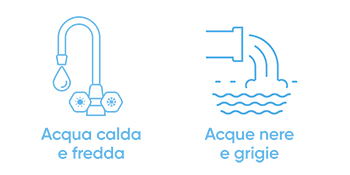
Sanitary water management
Domestic water management takes place in two phases:
- hot and cold water distribution
- conveyance of black and gray waters
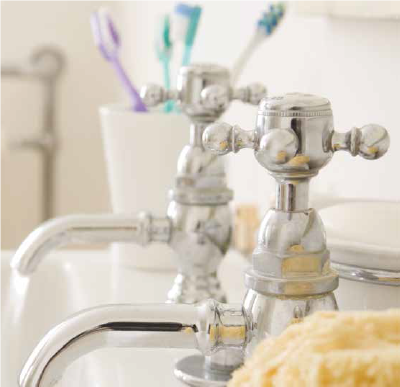
Hot and cold water
The need to guarantee the hygienic safety of closed environments, with confined spaces and high attendance, such as cruise ships for example, has become increasingly pressing today.
Preventing the risk of contamination also means paying special attention to all sanitary water supply and drinking water distribution systems to avoid bacterial proliferation.
Biofilm is a microbial community that adheres to the surface of the pipeline.
The water / material interface is a privileged place for the accumulation and development of bacteria, such as Legionella which develops in water circuits whose temperature varies between 25°C and 45°C or Pseudomonas bacteria which instead develop in domestic cold water networks.
The presence of biofilms, corrosion phenomena and limescale deposits in the pipes are factors that favor their proliferation.
To limit the development of bacteria in the water conveying circuits, 3 operations are therefore essential: combating the formation of limescale deposits and corrosion in the pipes, keeping the water in the systems at a high temperature or being able to increase the temperature according to needs of health treatments and avoid water stagnation by ensuring correct circulation.
To apply these measures, shock or continuous treatments, both chemical and thermal, can be envisaged.
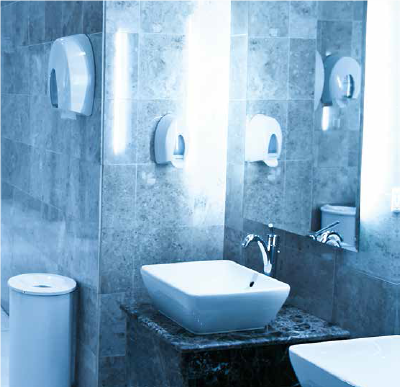
Black and gray waters
Since the 1970s, the problem of managing waste water produced by ships has led over 160 countries to sign an International Convention.
In fact, since 1973, discharges of black and gray water have been regulated internationally through Annex IV of the International Convention for the Prevention of Pollution from Ships, known as MARPOL 73/78. Discharges of waste water or “black water” into the sea
they are in fact prohibited with the exception of the specific conditions set out in the annex.
In the last decade, the number of passengers on cruise ships has increased by 10% per year and the growing popularity of this type of tourism has multiplied the number of ships and their sizes, resulting in a significant increase in the volume of black and gray water produced.
To safeguard the well-being of the planet's seas, the most attentive and responsible companies have already begun modernization processes of all systems and equipment aimed at the treatment and purification of waste water and sludge management.
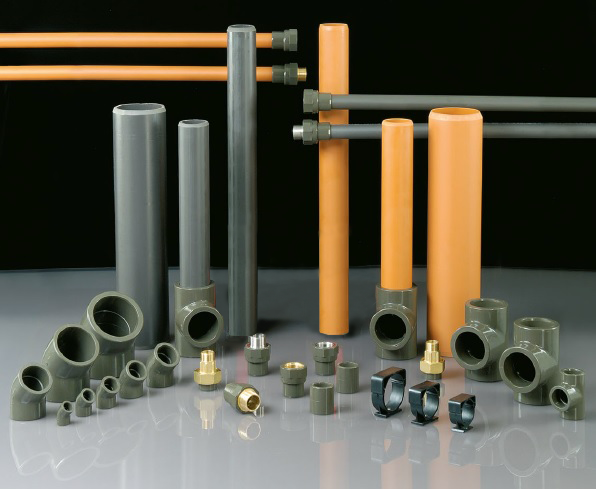
Aliaxis solutions
The System'O range of pipes and fittings
bicolor is made of PVC-C HTA, one of the least biofilm-promoting materials thanks to the low roughness of its surface, capable of withstanding chemical treatments (continuous chlorination and hyperchlorination) by virtue of its excellent compatibility with products containing chlorine or derivatives and to undergo heat treatments (thermal shock or constant maintenance of the temperature between 55°C and 60°C) due to its strong mechanical resistance properties.
The HTA and HTA-E systems are compliant with the fire behavior requirements indicated by the IMO MSC.399.
Strengths:
- Simple, fast and safe joint
- Easy installation thanks to
- lightness of the components
- Dedicated solutions for hot (HTA) and cold (HTA-F) water that are easily identifiable within the system
- Design pressure: 3 bar with water at 20°C (HTA-E)
- Reduced load losses
- Over 98% recyclable
Contact us for technical info on the products and to receive the catalogue
Our references
- Zelenodolsk shipyard - Russia - System'O lines for hot and cold water supply and black and gray water on MPSV07 lifeboats
- Zelenodolsk shipyard - Russia - Lines in PVC-C for conveying waste water and scuppers on BLV03 pilot boats
- ELI AKASO: System'O lines for conveying waste water on tanker
- AFRICAN LIFTER: System'O lines for supplying hot and cold water and black and gray water on merchant barge

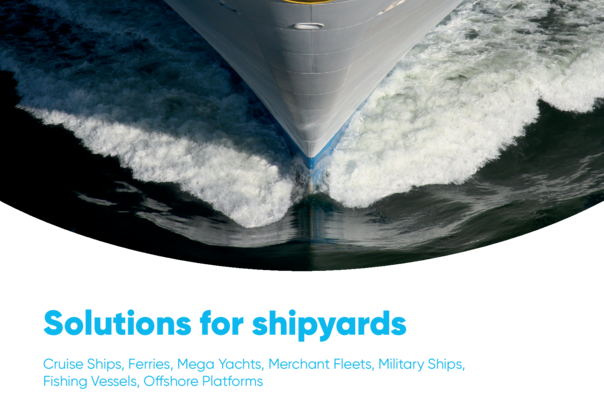
 get_app
get_app
 get_app
get_app